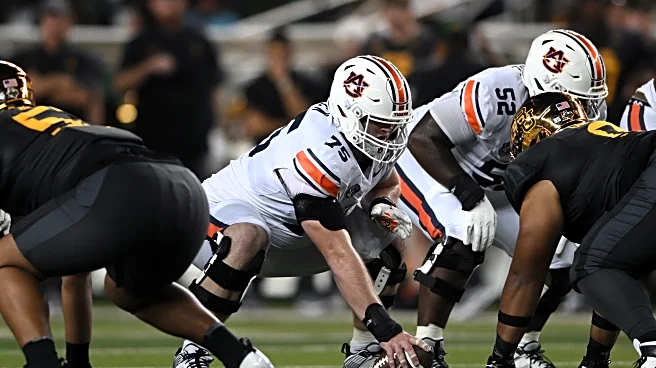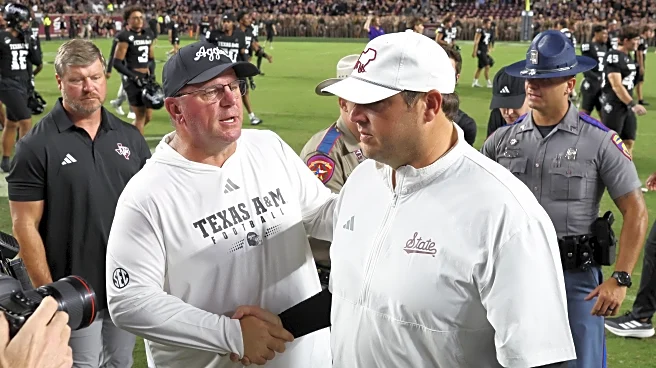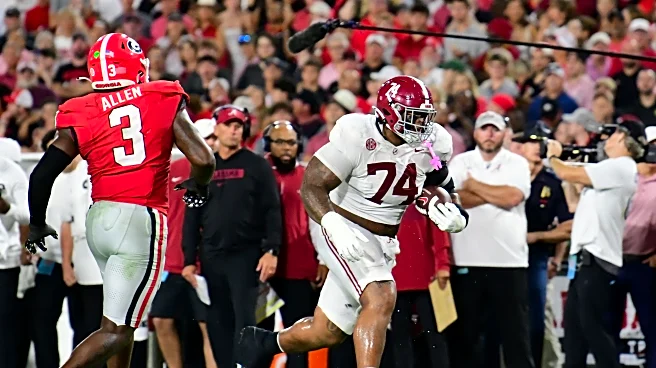What is the story about?
What's Happening?
Texas A&M's football team, under the guidance of Offensive Coordinator Collin Klein, has undergone a significant transformation in its offensive strategy. Last season, the team struggled with identity issues after switching quarterbacks mid-season due to an injury. This year, with a full offseason to design the offense around quarterback Marcel Reed, the Aggies have developed a top-20 offense in the country, averaging nearly 36 points per game. The team has successfully integrated a powerful running game with explosive passing plays, thanks to standout performances from players like Rueben Owens II, who rushed for 142 yards in a recent game against Mississippi State. The Aggies' ability to dominate through both the air and ground has created a new dual threat in their offensive playbook.
Why It's Important?
The shift in Texas A&M's offensive strategy is significant for several reasons. Firstly, it positions the team as a formidable contender in the SEC, with the potential to challenge top teams and vie for playoff spots. The dual threat approach makes it difficult for opposing defenses to predict and counter the Aggies' plays, increasing their chances of success in upcoming matches. Additionally, the improved offensive performance could attract more talent to the program, enhancing its competitiveness in recruiting battles. The success of the running game also alleviates pressure on quarterback Marcel Reed, allowing him to focus on executing high-impact plays without being the sole focus of defensive efforts.
What's Next?
Texas A&M will continue to refine its offensive strategy as it prepares for upcoming games, including a match against the Florida Gators. The team will aim to maintain its momentum and further develop its dual threat capabilities. Opposing teams will likely adjust their defensive strategies to counter the Aggies' balanced attack, leading to potentially more dynamic and competitive games. The success of the current strategy could influence other teams in the conference to adopt similar approaches, potentially reshaping offensive play styles within the SEC.
Beyond the Headlines
The evolution of Texas A&M's offense highlights broader trends in college football, where teams increasingly rely on versatile playbooks to gain competitive advantages. This shift reflects a growing emphasis on adaptability and innovation in coaching strategies, which could lead to more unpredictable and exciting games for fans. Additionally, the focus on developing a balanced offense underscores the importance of teamwork and collaboration among players, fostering a culture of unity and resilience within the team.
AI Generated Content
Do you find this article useful?














